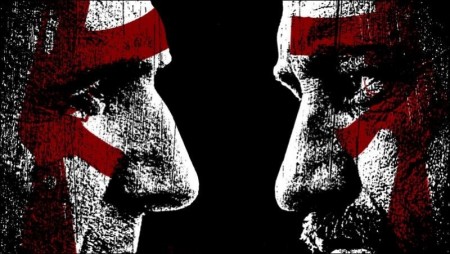“Coriolanus,” also known as “The Tragedy of Coriolanus,” was written in the latter part of William Shakespeare’s career and is his last major tragedy. Like Shakespeare’s earlier plays, “Titus Andronicus,” “Julius Caesar” and “Antony and Cleopatra,” this play was set in ancient Rome and based on historical accounts. The primary source was the “Life of Caius Martius Coriolanus” written in the late 1st Century by the ancient Greek historian, biographer and essayist Plutarch. Other possible sources include the Roman historian Livy’s “History of Rome.”
Most Shakespearean scholars agree that “Coriolanus” was written directly after “Antony and Cleopatra.” It shares with that play a fascination with the complex private lives of very public individuals. Screenwriter Logan says, “You can see Shakespeare turning over certain themes in this period of his career. In a way, the character of Coriolanus is almost a continuation of the character of Antony: a career military man who is finally brought low by his own shifting conceptions of honor and loyalty. Both Antony and Coriolanus betray their countries, and both are finally undone by their inability to master their intense passions. ” Shakespeare’s exploration of this theme — the isolation and ultimate excoriation of a seemingly popular public figure — would continue in his next play, “Timon of Athens.”
“Coriolanus ” is among Shakespeare’s lesser-known plays, but it is hardly without admirers. Poet T.S. Eliot, in his book The Sacred Wood: Essays on Poetry and Criticism (1922), called it Shakespeare’s “most assured artistic success, ” along with “Antony and Cleopatra. ” Critic and Shakespeare scholar Harold Bloom, in his bestseller Shakespeare: The Invention of the Human (Riverhead, 1998) writes, “‘Coriolanus,’ even more than ‘Julius Caesar’ and ‘Henry V,’ is Shakespeare’s political play. ” Citing his fascination with the title character, Bloom describes Coriolanus as “a battering ram of a soldier, literally a one-man army, the greatest killing machine in all of Shakespeare.”
“Coriolanus ” is set in the early years of the Roman Republic, which began in 509 B.C. when the tyrannical King Tarquin was overthrown and an elected government took over. Initially, all public offices were open only to the patrician class, who effectively absorbed the absolute power that had been enjoyed by the monarchy. In 494 B.C., ordinary Romans (the plebeians) won the right to elect two representatives, known as Tribunes, to the Roman Senate. But the remainder of Rome’s elected offices – including the most powerful office, Consul – remained off-limits to all but patricians, and there was considerable resentment and mistrust between the two classes. Meanwhile, Rome was in ongoing conflict with the Volsci people, who formed a neighboring city-state; the conflict began under King Tarquin and lasted for two centuries.
The historical conflict between Rome and the Volsci, and the struggle for political power, are woven into the narrative of Shakespeare’s play. As the play begins, Rome’s plebeians are bearing the brunt of a grain shortage and some citizens are on the verge of revolt. The focus of their anger is the valiant, honorable warrior Caius Martius, a patrician who responds to their complaint with open scorn.
Then Rome receives confirmation of an imminent attack by a Volscian army under the command of Martius’ blood enemy, Tullus Aufidius, and Martius sets out with a small force for the Volscian city of Corioles. Outnumbered but willing to perish before accepting defeat, Martius conquers the city virtually single-handedly, quashing the Volscian threat.
Upon returning to Rome, Martius is given a third name, Coriolanus, in recognition of his achievement. Pressured by his ambitious mother, Volumnia, the newly-dubbed Coriolanus reluctantly agrees to seek the office of Consul. But he bristles at the rituals of soliciting plebeian votes, and his political enemies, the Tribunes Sicinius Velutus and Junius Brutus, whip up public opposition to his bid.
Rejected and banished from Rome, Coriolanus decides to avenge himself on the countrymen who betrayed him. He seeks out his enemy, Aufidius, in the Volscian city of Antium, and offers to join his forces for an attack on Rome. As their armies begin their assault on Roman territories, Coriolanus’ closest allies — his friend and political patron, Senator Menenius, and his commanding general, Cominius — vainly implore him to spare the city.
Finally, Coriolanus’ family — his wife, Virgilia, and son, Martius, along with Volumnia – arrive to beg the avenging warrior for mercy. It is the iron-willed Volumnia, who proudly molded him into a warrior, who has the last word: she wrings from her son the concession that saves Rome. A peace is reached but Aufidius turns on Coriolanus, accusing him of treason. Proud as ever, Coriolanus reacts with fury, daring his enemies to kill him – which they do.
Visits: 70



